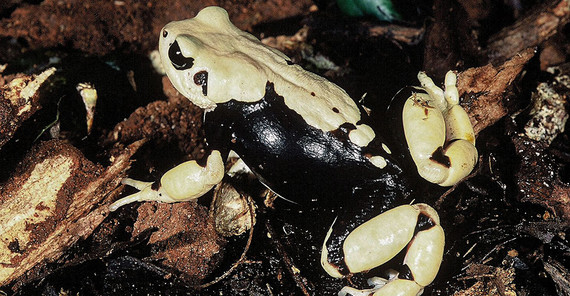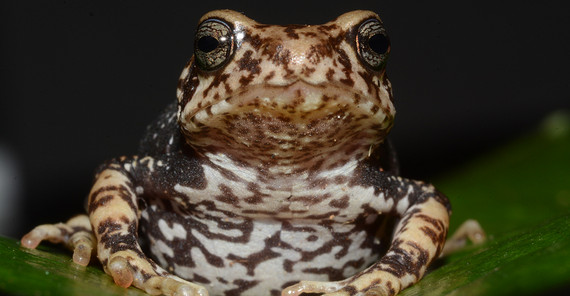“By visiting various natural history museums, examining hundreds of preserved toad specimens, and using so-called museomic methods to extract DNA, we were able to gain a clearer picture of their morphological diversity and describe new species,” says Christian Thrane of the University of Copenhagen, lead author of the study.
“Still, live-bearing is exceptionally rare among frogs and toads, practiced by less than one percent of frogs species, making these new species exceptionally interesting” says H. Christoph Liedtke a co-author from the Spanish National Research Council, who has specialized in the evolution of amphibian reproductive modes. Only a handful of frog species from South America and southeast Asia have developed similar strategies. Most textbooks will tell you only one story of frog reproduction: eggs to tadpoles to froglets to adults. “It’s the standard paradigm,” says Assoc. Prof. Mark D. Scherz, Curator for Herpetology at the Natural History Museum Denmark, a coauthor on the study, “But there is actually a lot of diversity in amphibian reproduction”.
A crucial part of the study took place at the University of Potsdam, where Dr. Alice Petzold carried out the museomics analyses on type specimens housed at the Museum für Naturkunde Berlin, used by Gustav Tornier to describe the first live-bearing toad for the genus Nectophrynoides back in 1905. “Some of these specimens were collected more than 120 years ago,” says Petzold. “Our museomics work was able to reveal exactly which populations those old specimens belonged to, giving us a lot more confidence for future work on these toads”.
“These discoveries underscore the diversity of live-bearing toads, as well as the importance of protecting East Africa’s forests” says Dr Simon P. Loader, Principal Curator of Vertebrates at the Natural History Museum, London, another coauthor on the study and an expert on the amphibians of East Africa. “If we lose these forests, we will lose one of the most unusual forms of amphibian reproduction known. And only by continuing to explore these poorly known areas, and protecting them, can we gain a more complete picture of the diversity they harbour, and ensure that it is around for future generations to study.”
This study demonstrates the continuing importance of natural history collections for scientific research and biodiversity conservation, and shows how combining data from modern and historical specimens can help to uncover hidden biodiversity.
Link to Publication: Thrane C, Lyakurwa JV, Liedtke HC, Menegon M, Petzold A, Loader SP, Scherz MD (2025) Museomics and integrative taxonomy reveal three new species of glandular viviparous tree toads (Nectophrynoides) in Tanzania’s Eastern Arc Mountains (Anura: Bufonidae). Vertebrate Zoology 75, https://doi.org/10.3897/vz.75.e167008
Image 1:Nectophrynoides, like this N. viviparus, live in the low vegetation. Photo: Michele Menegon
Image 2: One of the newly described toad species, Nectophrynoides uhehe. Photo: Michele Menegon
Image 3: One of the newly described toad species, Nectophrynoides luhomeroensis. Photo: John Lyarkurwa
Contact:
Dr. Alice Petzold, Institute of Biochemistry and Biology
Phone: +49 331/977-6328
E-Mail: alice.petzolduuni-potsdampde
Media Information 06-11-2025 / Nr. 09



